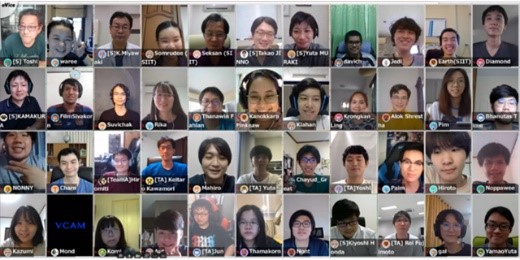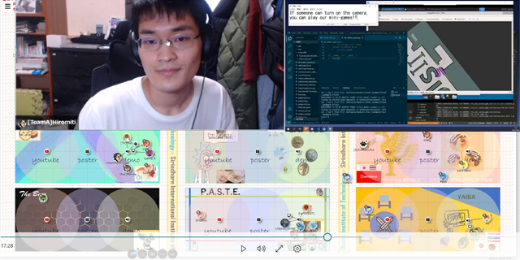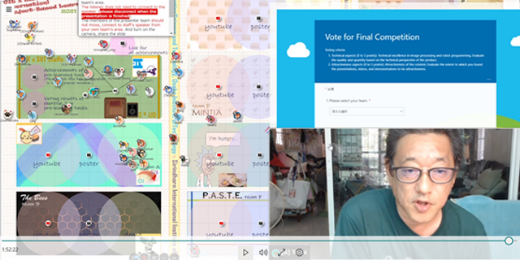


From August 28 to September 4, the Faculty of Information Science and Technology conducted an International Project-Based Learning (iPBL) program online with Sirindhorn International Institute of Technology (SIIT), Thammasat University, Thailand, with support of the Japan Science and Technology Agency (JST) under the Sakura Science Program.
This program has been held every year since 2014 (it was cancelled in FY2020 due to COVID-19), and this year was the seventh time. This year, it was led by Professor Makoto Hirayama and a team of instructors with supporting graduate students, 18 students from the School of Information Science, 30 students from SIIT participated in the program to create and simulate a computer program that satisfies the following conditions integrating robot control and image processing:
- Automatically control a robot in a virtual space on an online simulator and make it visit multiple checkpoints in the virtual space.
- At each checkpoint, the robot plays an interactive game which is processed based on body movements and facial expressions captured by a webcam.
During the pre-learning period from July 1 to August 27, the students made full use of online tools such as oVice, Slack, and GitHub prepared by the instructors to learn programming, and worked on creating videos introducing the recommended foods of both countries, which was set as a cultural exchange task.
In the main program that started on August 28 after an opening ceremony, the participants worked on the topic assignment using the skills they had acquired and the friendship they had deepened through prior learning, and created posters and videos based on the results. On the last day, the Final Competition was held to showcase the results of the iPBL, and the Closing Ceremony was also held. The Final Competition consisted of two parts: the first part was a poster session where participants could freely look around the videos and posters of the iPBL results placed on the oVice, and the second part was a 7-minute oral presentation where each group presented their results. In addition to running the robot simulator, they added narration and stories to the videos to make them more interesting. The winners were ranked by the participants and awarded in the Closing Ceremony.